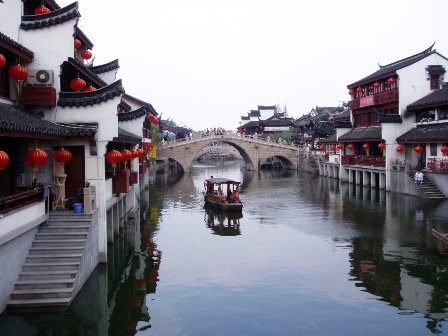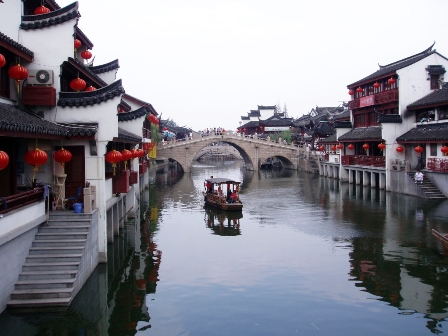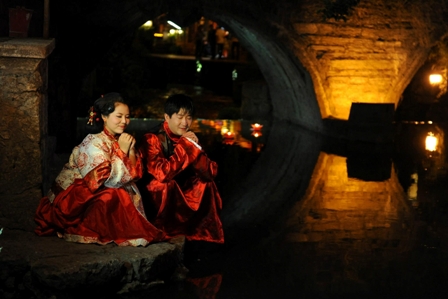Ancient citadel of water on the plateau
Lijiang Ancient Town is located in the northwest of Yunnan Province, south of the Hengduan Mountains, in the upper reaches of the Jinsha River. The ancient town is famous for its majestic mountains, ancient houses and unique customs of the local people. Lijiang has relics of the Dongba culture and ancient musical instruments of the Naxi period. This place was once the heart of the ancient Naxi Kingdom and was mainly inhabited by the Naxi ethnic group. In 1997, Lijiang Ancient Town was recognized as a World Cultural Heritage.
Lijiang Ancient Town is located at an altitude of 2,416m above sea level. This is a plateau, an ancient town with a strong national style and is relatively intact to this day. This ancient town was started to be built in the early Yuan Dynasty, with a majestic architectural style. The houses in the ancient town often face the river, with canals and rivers on both sides of the alley.
The streets in Lijiang Ancient Town are built according to the terrain of mountains and water, the roadbed is paved with red bricks, it is not muddy in the rainy season, and it is not dusty in the summer, the patterns on the bricks and stones are still clearly visible, harmoniously blending with the environment of the ancient town. Sifang Street in the center of the ancient town is a representative of Lijiang Ancient Town.
The roads and alleys in the ancient citadel are intricately interwoven. The walls are low, and the three sides of the ancient citadel are three mountains (Mien Mountain to the north, Lion Mountain to the west, and Van But Mountain to the south). All the houses here are wooden houses with red tiled roofs. The roads in the citadel are intricate, with the main road at the center then spreading out into branches and alleys. The main roads on the four sides of the ancient citadel are said to have been built under the seal of the Governor, demonstrating his power in all directions. The road surfaces are paved with stones produced by the people of Lijiang, and the bridges over the canals are mainly stone bridges.
In Lijiang Ancient City, there are still many stone bridges built during the Ming and Qing dynasties. After hundreds of years of erosion by rain and sun, and even earthquakes, these bridges are still very sturdy. In Lijiang Ancient City, there are many ancient architectural works built during the Ming and Qing dynasties, which are still relatively intact. The style of the houses combines the characteristics of the Han Chinese's four-sided courtyard houses and the Bai people's houses. The doors usually face East, the corridors are wide, there are square wells, and the doors are carved with elaborate patterns.
People here often build water pipes on the western river, to take advantage of the water resources of the western and eastern rivers for daily life.
A place that contains an ancient culture
Lijiang Ancient Town has a long history, simple, ancient and natural. The city's layout is evenly mixed, with both the characteristics of the mountainous region and the appearance of the river countryside. Lijiang residents have harmonized the quintessence of the Han, Bai, Yi, and Tibetan ethnic groups, and have the unique style of the Naxi ethnic group, which is a rare and important heritage for studying the history of architecture and the history of Chinese culture. Lijiang Ancient Town encompasses a rich traditional ethnic culture, has concentrated on demonstrating the prosperity and development of the Naxi ethnic group, and is an important historical document for studying the development of human culture.
The flowing urban space, the vibrant river system, the unified architectural clusters, the appropriately sized residential architecture, the comfortable and intimate spatial environment, and the unique ethnic art content have made Lijiang Ancient Town a famous historical and cultural city.
Until now, visitors here can still see the scene of local people using river water to wash their roads and doors. Main attractions: Ngoc Tuyen Park, Ngu Phuong Tower, Van Tap Son Tra, Dong Ba Culture Museum, white sand murals, Ngoc Long Snow Mountain...
The World Heritage Committee has assessed that: “The ancient city of Lijiang has skillfully harmonized the economic and strategic importance with the rugged terrain, preserving and recreating the ancient face of the ancient city in a realistic and perfect way. The architecture of the ancient city of Lijiang has undergone the challenges of countless dynasties, gone through many ups and downs, and has harmonized the cultural colors of many ethnic groups, so it is famous far and wide. Lijiang also has an ancient river system, they flow crisscrossing the ancient city, truly skillful and unique, until now these rivers still play an effective role”.





































